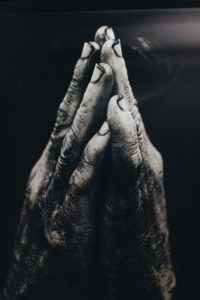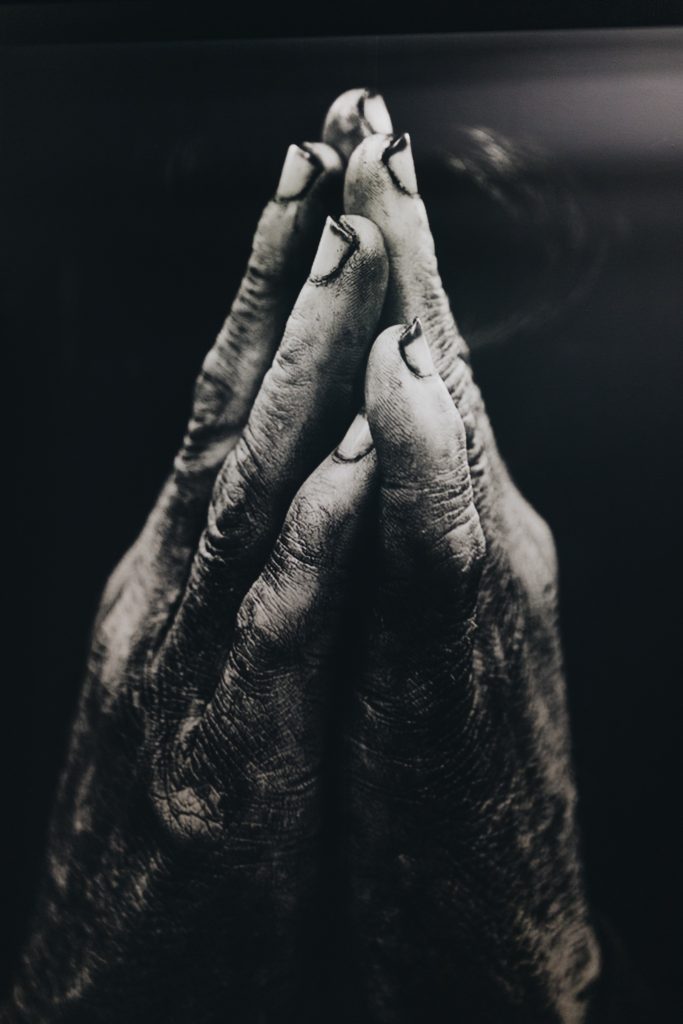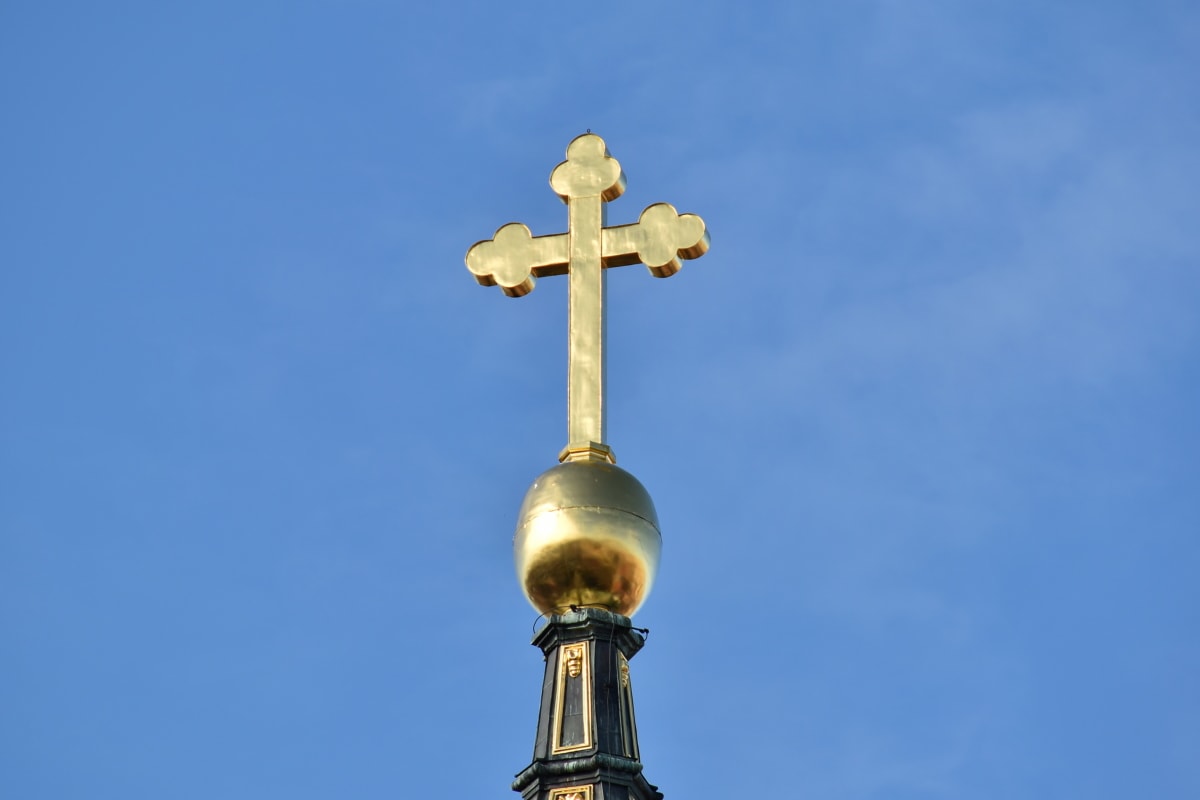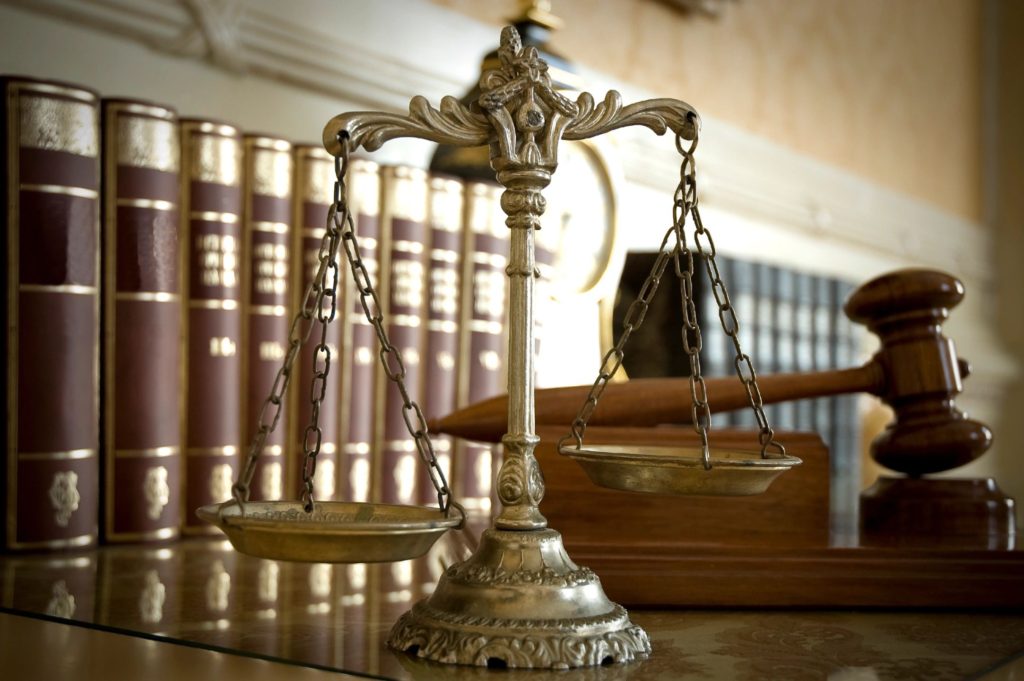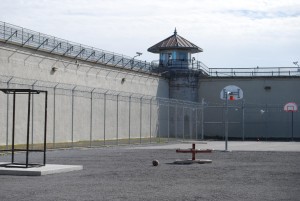By Sutton Travis
In a decision that expanded religious liberties for prisoners on the verge of execution, the Supreme Court held in the late evening hours of Feb. 11 that Alabama prisoner Willie Smith could not be executed unless Alabama permitted Smith’s chaplain to accompany him into the execution chamber.[1]
Smith filed a complaint in the Middle District of Alabama on Dec. 14, 2020, alleging that the Alabama Department of Corrections’ policy of restricting all except the prison’s execution team from the execution chamber violated his rights under the Religious Land Use and Institutionalized Persons Act of 2000[2] (“RLUIPA”).[3] Smith sought an injunction against his execution scheduled for Feb.11, 2021, claiming that the policy violated RLUIPA by excluding his Christian minister from the execution chamber.[4] Smith’s complaint explained that it was “integral to [his] faith” that his pastor “be physically present with him at the time of his execution.”[5] The district court denied Smith’s request for an injunction,[6] relying on Alabama’s argument that allowing a chaplain into the execution chamber would undermine security measures.[7] However, the Eleventh Circuit reversed and granted the injunction,[8] which the Supreme Court declined to vacate in Dunn v. Smith.[9]
In her concurring opinion that elaborated on the Court’s one-sentence decision to uphold the injunction, Justice Kagan declared that “[t]he law guarantees Smith the right to practice his faith free from unnecessary interference, including at the moment the state puts him to death.”[10] Alleged violations of RLUIPA are analyzed under an “exceptionally demanding” strict scrutiny standard,[11] which mandates that a prison must employ “the least restrictive means of furthering [its] compelling governmental interest.”[12] Although Kagan acknowledged that Alabama does have a “compelling state interest” in maintaining “prison security,”[13] Alabama’s policy failed to implement the least restrictive means available because “a prison may ensure security without barring all clergy members from the execution chamber.”[14] Kagan admonished that she could find no example where “the presence of a clergy member . . . disturbed an execution.”[15] As she recommended, the prison could perform background checks and interview the minister to ensure that the minister is fit to attend the execution.[16]
Prior Case Law Development on Execution Litigation
Smith is the latest installment in a recent line of cases evaluating prisoners’ religious liberties in the context of executions. In Dunn v. Ray,[17] the Supreme Court vacated the Eleventh Circuit’s stay of execution for Domineque Ray in an unsigned order on Feb. 7, 2019.[18] Ray, a practicing Muslim and Alabama prisoner, had petitioned for a stay of execution because the prison refused to allow his imam to enter the execution chamber, even though Christian ministers were permitted in the chamber.[19] The Court’s unsigned order did not elaborate on its decision to vacate the stay of execution, only citing Gomez v. United States District Court for the Northern District of California[20] for the proposition that a reviewing court can take into account the “last-minute nature of an application to stay execution.”[21] Kagan vehemently dissented, stating that the Court’s decision was “profoundly wrong.”[22] According to Kagan, the Court’s decision failed to recognize Ray’s “powerful claim that his religious rights will be violated.”[23] Kagan further argued that Ray’s request was timely, as he filed his complaint only five days after Alabama denied his request to have his imam accompany him into the execution chamber.[24]
Another execution-related religious liberty case came just a month later in Murphy v. Collier.[25] The Supreme Court blocked Patrick Murphy’s execution in March 2019 because Texas’s policy did not permit a Buddhist spiritual advisor to accompany Murphy into the execution chamber.[26] At the time, Texas only allowed Christian or Muslim ministers to enter the execution chamber.[27] In a brief paragraph, the Supreme Court explained that Murphy’s execution could not proceed until Texas permitted a Buddhist spiritual advisor to “accompany Murphy in the execution chamber.”[28] Justice Kavanaugh, who concurred in the decision to grant the stay of execution, attempted to distinguish Murphy from the Court’s decision in Ray, emphasizing that Murphy submitted his request for a Buddhist minister an entire month before the date of his scheduled execution.[29] Despite Kavanaugh’s explanation, the “disparate outcomes” of Ray and Murphy have been characterized as arbitrary.[30]
Five days after the Supreme Court granted the stay of execution in Murphy, Texas revised its policy to bar all religious ministers from the execution chamber.[31] Although Kavanaugh wrote a concurring opinion in the Murphy case, he also released an additional statement, opining that Texas’s revised policy “solve[d] the equal-treatment constitutional issue” and “likely passe[d] muster under [RLUIPA].”[32] In essence, Kavanaugh advised death penalty states to remedy religious discrimination concerns by simply barring all religious ministers from the execution chamber.[33] Relying on Kavanaugh’s statement, Alabama amended its policy in April 2019 and joined Texas in excluding all religious officials from its execution chamber.[34]
Shortly after Texas’s policy revision, prisoner Ruben Gutierrez challenged the new policy, arguing that it violated his religious liberties under RLUIPA by prohibiting his chaplain from accompanying him in the execution chamber.[35] However, the Supreme Court did not weigh in on the merits of Gutierrez v. Saenz.[36] Instead, the Court merely issued a one-paragraph remand, instructing the district court to consider “the merits” of Gutierrez’s claims based on the district court’s earlier findings that allowing a spiritual advisor into the execution chamber would not result in serious security problems.[37] Thus, Smith was the first case where the Supreme Court’s decision actually indicated that barring religious ministers from the execution chamber could violate RLUIPA.
Concerns About the Supreme Court’s Surreptitious Shadow Docket
Smith also marks one of the most recent decisions from the Supreme Court’s “shadow docket,” a term used to refer to emergency orders that are granted separately from the Court’s “normal merits docket.”[38] Shadow docket decisions are viewed with some skepticism because they are decided without oral argument and are typically short, supported by minimal legal reasoning or explanations, and can be unsigned by individual justices.[39] The shadow docket has recently received national attention because of the Trump administration’s high volume of requests for emergency relief in the form of shadow docket decisions,[40] as well as the heightened divisiveness on display in recent shadow docket rulings.[41] In fact, these concerns led the House Judiciary Committee’s Subcommittee on Courts, Intellectual Property, and the Internet to hold a hearing Feb. 18 to discuss the shadow docket.[42] In his testimony before the subcommittee, University of Texas law professor Stephen Vladeck referenced the uncertainty about whether Justice Alito or Justice Gorsuch (or both) joined Kagan’s opinion in Smith to provide the fifth (or sixth) vote to block Smith’s execution.[43] According to Vladeck, this anonymity in shadow docket decisions can “complicate[] efforts to decipher the potential impact of the Court’s ruling beyond the instant case.”[44]
In his own testimony, Amir H. Ali, Deputy Director of the Supreme Court and Appellate Program of the MacArthur Justice Center, criticized the “arbitrariness” and “disparate outcomes” of the Supreme Court’s recent shadow docket execution decisions.[45] In order to combat the trend of unexplained, arbitrary decisions, Ali advised Congress to codify a standard of review for the Supreme Court to implement when reviewing shadow docket cases[46] and to also require the Court to supply reasonings for these decisions.[47]
The Potential Impact of Smith
Despite the uncertainty surrounding shadow docket decisions, the Supreme Court’s stance in Smith will likely affect several of the other twenty-seven states that continue to recognize the death penalty.[48] As Kavanaugh noted in his statement following Murphy,[49] Texas has explicitly barred religious ministers from the execution chamber since April 2019.[50] Additionally, Idaho’s current execution protocol implies that religious ministers may not enter the execution chamber with the prisoner, as “a spiritual advisor of the offender’s choosing” is expected to witness the execution from the “condemned offender’s witness area.”[51] Similarly, North Carolina’s execution protocol also indicates that religious ministers cannot accompany the prisoner into the execution chamber, stating that religious ministers “will be seated in the first row of chairs” during the execution.[52]
As of Feb. 24, none of these states appear to have publicly acknowledged Smith or addressed how it will impact their current policies. Nevertheless, policy adjustments will likely be necessary to avoid an onslaught of litigation and, more importantly, to respect prisoners’ religious liberties. As Ali testified to the House subcommittee, “[w]hen it comes to the death penalty, the importance of getting things right is at its zenith: there is no do-over.”[53]
[1] Dunn v. Smith, No. 20A128, 2021 WL 517473, at *1 (U.S. Feb. 11, 2021); see also Amy Howe, Court Won’t Allow Alabama Execution Without a Pastor, SCOTUSblog (Feb. 12, 2021, 2:35 AM), https://www.scotusblog.com/2021/02/court-wont-allow-alabama-execution-without-a-pastor/ (explaining that the Court released its decision “around midnight eastern time”).
[2] 42 U.S.C. § 2000cc–1.
[3] Smith v. Dunn, No. 2:20-CV-1026, 2021 WL 358374, at *1 (M.D. Ala. Feb. 2, 2021), rev’d sub nom. Smith v. Comm’r, No. 21-10348, 2021 WL 490283, at *1 (11th Cir. Feb. 10, 2021), aff’d sub nom. Smith, 2021 WL 517473, at *1.
[4] Id.
[5] Id. at *6.
[6] Id. at *22.
[7] See id. at *9–10.
[8] Smith, 2021 WL 490283, at *1, aff’d Smith, 2021 WL 517473, at *1.
[9] 2021 WL 517473, at *1.
[10] Id. at *2 (Kagan, J., concurring).
[11] Id. at *1 (quoting Holt v. Hobbs, 574 U.S. 352, 364 (2015)).
[12] 42 U.S.C. § 2000cc–1(a)(2).
[13] Smith, 2021 WL 517473, at *1 (Kagan, J., concurring).
[14] Id.
[15] Id.
[16] Id. at *2.
[17] 139 S. Ct. 661 (2019) (mem.).
[18] Id. at 661.
[19] See id. at 661–62 (Kagan, J., dissenting).
[20] 503 U.S. 653, 654 (1992).
[21] Ray, 139 S. Ct. at 661 (quoting Gomez, 503 U.S. at 654).
[22] Id. at 661 (Kagan, J., dissenting).
[23] Id. at 662.
[24] Id.
[25] 139 S. Ct. 1475 (2019) (mem.).
[26] See id. at 1475.
[27] Id. (Kavanaugh, J., concurring) (“[T]he relevant Texas policy allows a Christian or Muslim inmate to have a state-employed Christian or Muslim religious adviser present either in the execution room or in the adjacent viewing room.”).
[28] Id. (majority opinion).
[29] Id. at 1477 (Kavanaugh, J., supplementary statement).
[30] The Supreme Court’s Shadow Docket: Hearing Before the Subcomm. on Cts., Intell. Prop., & the Internet of the H. Comm. on the Judiciary, 117th Cong. 4 (2021) (statement of Amir H. Ali, Deputy Director, Supreme Court & Appellate Program of the MacArthur Justice Center) [hereinafter Ali Hearing Statement] (“The disparate outcomes of these cases demonstrate the arbitrariness of present Shadow Docket practice in terms of who dies without this basic dignity.”).
[31] Murphy, 139 S. Ct. at 1476 (Kavanaugh, J., supplementary statement) (“Texas now allows all religious ministers only in the viewing room and not in the execution room.”).
[32] Id.
[33] See Howe, supra note 1 (describing Kavanaugh’s supplementary statement in Murphy as “suggesting” the “solution” of excluding all religious ministers from the execution chamber).
[34] See Smith v. Dunn, No. 2:20-CV-1026, 2021 WL 358374, at *2 (M.D. Ala. Feb. 2, 2021) (explaining that following “litigation in both Alabama in Texas,” Alabama revised its execution policy in April 2019 to restrict all religious ministers from the execution chamber), rev’d sub nom. Smith v. Comm’r, No. 21-10348, 2021 WL 490283, at *1 (11th Cir. Feb. 10, 2021), aff’d sub nom. Dunn v. Smith, No. 20A128, 2021 WL 517473, at *1 (U.S. Feb. 11, 2021).
[35] See Juan A. Lozano, U.S. Supreme Court Halts Texas Execution Over Clergy Question, AP News (June 16, 2020), https://apnews.com/article/4e9159f5a14395d6aaad24a7d545e738.
[36] No. 19-8695, 2021 WL 231538, at *1 (U.S. Jan. 25, 2021) (mem.).
[37] Id. at *1. An earlier grant from the Supreme Court to issue a stay for the execution (while Gutierrez’s petition for certiorari was still pending) had instructed the District Court to evaluate “whether serious security problems would result if a prisoner facing execution is permitted to choose the spiritual adviser the prisoner wishes to have in his immediate presence during the execution.” Gutierrez v. Saenz, 141 S. Ct. 127, 128 (2020) (mem.); see also Smith, 2021 WL 358374, at *3 (noting that the district court in Gutierrez had found that “no serious security problems would result” from the presence of spiritual advisors in the execution chamber (citing Gutierrez v. Saenz, No. 19-cv-185 (S.D. Tex. 2019), Doc. 124, p.2))).
[38] Debra Cassens Weiss, House Panel Considers Reforms to Deal with Supreme Court’s Shadow Docket, ABA J. (Feb. 19, 2021, 9:38 AM), https://www.abajournal.com/news/article/house-panel-considers-reforms-to-deal-with-supreme-courts-shadow-docket-more-transparent.
[39] See id.; see also Hon. Trevor McFadden & Vetan Kapoor, Symposium: The Precedential Effects of Shadow Docket Stays, SCOTUSblog (Oct. 28, 2020, 9:18 AM), https://www.scotusblog.com/2020/10/symposium-the-precedential-effects-of-shadow-docket-stays/; Steve Vladeck, The Supreme Court’s Most Partisan Decisions Are Flying Under the Radar, Slate (Aug. 11, 2020, 12:12 PM), https://slate.com/news-and-politics/2020/08/supreme-court-shadow-docket.html.
[40] The Supreme Court’s Shadow Docket: Hearing Before the Subcomm. on Cts., Intell. Prop., & the Internet of the H. Comm. on the Judiciary, 117th Cong. 4–5 (2021) (statement of Stephen Vladeck, Charles Alan Wright Chair in Federal Courts, University of Texas School of Law) [hereinafter Vladeck Hearing Statement] (explaining that over four years, the Trump administration filed forty-one applications with the Supreme Court for emergency relief, which was “more than twenty times” the number of applications prior administrations submitted between January 2001 and January 2017). The Supreme Court granted twenty-four of these applications “in full and four in part.” Id. at 5.
[41] Id. at 5 (“[D]uring the October 2019 Term, there were almost as many public 5-4 rulings on the shadow docket (11) as there were on the merits docket (12).”).
[42] The Supreme Court’ Shadow Docket, House Comm. on Judiciary, https://judiciary.house.gov/calendar/eventsingle.aspx?EventID=4371 (last visited Feb. 24, 2021). This link contains a recording of the virtual hearing.
[43] Vladeck Hearing Statement, supra note 40, at 6. Justices Breyer, Sotomayor, and Barrett joined Justice Kagan’s opinion in Smith, Justice Kavanaugh’s dissent was joined by Chief Justice Roberts, and the opening sentences of the decision note that Justice Thomas would have vacated the injunction. Dunn v. Smith, No. 20A128, 2021 WL 517473, at *1 (U.S. Feb. 11, 2021). The decisions of Justices Gorsuch and Alito remain unknown, leading to speculation about which of the two joined the majority decision. See, e.g., Jonathan H. Adler, SCOTUS Refuses to Let Alabama Execute Willie Smith Without His Pastor Present (Without Noting Who Cast the Fifth Vote), Reason: Volokh Conspiracy (Feb. 18, 2021, 1:46 PM), https://reason.com/volokh/2021/02/13/scotus-refuses-to-let-alabama-execute-willie-smith-without-his-pastor-present-without-noting-who-cast-the-fifth-vote/ (“If I had to guess, I would think Justice Gorsuch provided the fifth vote to deny the application, though it is also possible both opted to leave the lower court’s injunction in place.”).
[44] Vladeck Hearing Statement, supra note 40, at 6.
[45] Ali Hearing Statement, supra note 30, at 4.
[46] See id. at 5. In particular, Ali recommended adopting the standard currently used for overturning certain state court decisions concerning prisoners, which requires that the Supreme Court should disturb “a lower court’s request for additional time to consider the lawfulness of an execution” only when “it is apparent to the Supreme Court that the lower court’s decision was ‘contrary to, or involved an unreasonable application of, clearly established Federal law’ or rested on ‘an unreasonable determination of the facts in light of the evidence presented.’” Id. at 6 (quoting 28 U.S.C. § 2254(d)).
[47] See id. at 6.
[48] State by State, Death Penalty Info. Ctr., https://deathpenaltyinfo.org/state-and-federal-info/state-by-state (last visited Feb. 18, 2021) (listing twenty-eight states that still recognize the death penalty). However, three of these states (California, Oregon, and Pennsylvania) currently have a governor-imposed moratorium on executions. Id. An additional nine death penalty states have not carried out executions in at least ten years. Executions Overview: States with No Recent Executions, Death Penalty Info. Ctr. (July 14, 2020), https://deathpenaltyinfo.org/executions/executions-overview/states-with-no-recent-executions. Virginia also appears to be on the brink of abolishing its death penalty. See Dean Mirshahi, With Northam’s Signature, Virginia Will Become First Southern State to Abolish the Death Penalty, ABC News (Feb. 23, 2021 12:48 PM), https://www.wric.com/news/politics/capitol-connection/with-northams-signature-virginia-will-become-first-southern-state-to-abolish-the-death-penalty/ (noting that both the Virginia House and Senate have approved a bill abolishing the death penalty, and Governor Northam “seems poised to sign the legislation”).
[49] See Murphy v. Collier, 139 S. Ct. 1475, 1476 (2019) (Kavanaugh, J., supplementary statement).
[50] See Execution Procedure, Tex. Dep’t Crim. Just. Corr. Insts. Div. 8 (Apr. 2, 2019), https://files.deathpenaltyinfo.org/legacy/files/pdf/TX%20Execution%20Procedure%2004.02.2019.pdf (“[Texas Department of Criminal Justice] Chaplains and Ministers/Spiritual Advisors designated by the offender may observe the execution only from the witness room.”).
[51] Execution Procedures, Idaho Dep’t Corr. 16 (Jan. 6, 2012), https://files.deathpenaltyinfo.org/legacy/files/pdf/ExecutionProtocols/IdahoProtocol01.06.2012.pdf.
[52] Execution Procedure Manual for Single Drug Protocol (Pentobarbital), N.C. Dep’t Pub. Safety 7 (Oct. 24, 2013), https://www.ncdps.gov/document/execution-procedure-manual-single-drug-protocol-pentobarbital. The protocols also provide that the religious minister should remain with the prisoner in the Preparation Room “until orders are given to move the condemned prisoner into the Death Chamber.” Id. at 16.
[53] Ali Hearing Statement, supra note 30, at 5.
Post Image by Nathan Dumalo on Unsplash.

